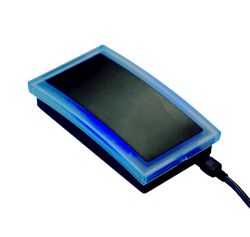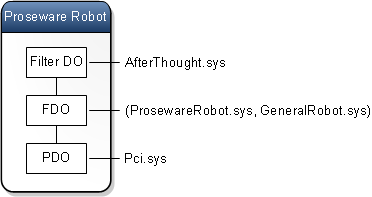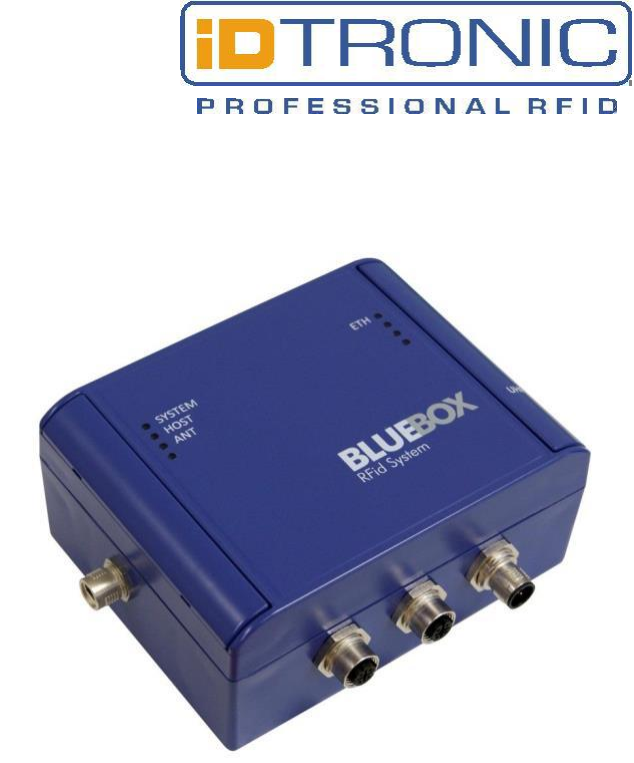Open the Device Manager by right clicking “My computer” and selecting control panel. Look under Ports (COM & LPT). You should see an open port named 'USB Serial Port' Right click on the 'USB Serial Port' and choose the 'Update Driver Software' option. Next, choose the 'Browse my computer for Driver software' option.
[2020 Updated] Download USB Drivers for Any Android (Samsung/ Motorola /Sony/ LG/ HTC/ ASUS/ Huawei and others): .Here we are sharing all the latest Android USB Drivers for Windows and Mac. You can download them from the download section below and install them on your PC or Mac
USB Drivers are one of the must-have tools to be installed on your PC or Mac. Because of that, your mobile device interacts with your PC.These work as Bridge between your Phone and your computer. The USB drivers help us to connect our phone to the computer and perform tasks like transferring data, syncing your device with a PC. They help us to connect our Android devices to tools like Odin, Sony Flash tool, and SuperOneClick.
- The serial port ttySx (x=0,1,2, etc.) is major number 4. You can see this (and the minor numbers too) by typing: 'ls -l ttyS.' in the /dev directory. To find the device names for various devices, see the 'devices' file in the kernel documentation. There formerly was a 'cua' name for each serial port and it behaved just a little differently.
- Select the driver your printer is already using, as shown in the printer’s properties window, and click “Next.” Select “Use the driver that is currently installed (recommended)” and click “Next.” This ensures the new printer device is using the same port and printer driver as the original printer device.
- The Sealevel Mod+ Connect 2.0 app is an easy-to-use diagnostic utility that allows you to monitor, test and troubleshoot Sealevel I/O devices using your iOS device. Read More April 15, 2016 - Driver Downloads & Software, Windows, Digital I/O, SeaMAX.
Below, we are sharing the links to USB drivers for most of the popular Android device manufacturers like Samsung, LG, Sony, Google, HTC, Motorola, Dell, etc. These USB drivers are safe to use as they are from their respective manufacturers. All the links are valid and official. We recommend you to download the latest USB drivers
[note type=”important”]It is highly recommended to Enable USB debugging on android smartphones before performing any task in the fastboot mode. [/note]Download USB Drivers for Android
Samsung USB Drivers
| Latest Samsung Drivers | Download |
| Download Latest Samsung Kies | Download |
| Samsung Android ADB Interface Driver v2.9.510.0 | Download |
OnePlus USB Drivers
| Latest OnePlus USB Drivers (Windows and Mac) | Download |
For MediaTek VCOM Driver
| MediaTek VCOM MTK Drivers (Updated) | Download |
Motorola USB Driver

| Latest Motorola USB Drivers (Win & Mac) | Download |
Google USB Drivers
| Latest Google USB Drivers | Download |
HTC USB Drivers
| Latest HTC USB Drivers 4.17.0.001 | Download |
| HTC Sync Manager | Download |
Sony USB Drivers
| Latest Sony USB Drivers | Download |
| Sony PC Companion | Download |
| Sony Bridge for Mac | Download |
LG USB Drivers
| Latest LG USB Drivers | Download |
| LG Flash and LG UP Tool | Download |
| LG UpperCut Tool | Download |
- LG United Drivers for Verizon | Mirror
Dell USB Drivers
| Latest Dell USB Drivers | Download |

Go to the link and choose your mobile device or tablet to download the specific version USB drivers.

Intel Android USB Drivers
| Latest Intell Android USB Drivers | Download |
ZTE USB Drivers
| Latest ZTE USB Drivers | Download |
LeEco USB Drivers

| Latest LeEco USB Drivers | Download |
ASUS USB Drivers
| Download Asus PC suite PC Link (drivers included) | Download |
Huawei USB Drivers
| Latest Huawei USB Drivers | Download (Check below) |
Drivers Idtronic Port Devices Lucie
- Download HiSuite (drivers included) || Windows | Mac
Acer USB Drivers

| Latest Acer USB Drivers | Download |
Sharp USB Drivers
Drivers Idtronic Port Devices Terminal
Amazon USB Drivers
| Latest Amazon USB Drivers | Download |
Pantech USB Drivers
| Latest Pantech USB Drivers (PC Suit) | Download |
XIAOMI USB Drivers
- Download Mi Phone Manager (PC Suite) | Mirror
Lenovo USB Drivers
| Latest Lenovo USB Drivers | Download |
Micromax USB Drivers
| Latest Micromax USB Drivers | Download |
Video Guide: Enable Developer Options, USB Debugging and OEM Unlock On Android
[note type=”important”]In case the above drivers do not work for you, do as described below:
- Go to the official site of the manufacturer
- Type the name and model of your device in the search box.
- Select your device and click the Support tab/button.
- You will get the download link for the specific USB Drivers for your device.
- Download the drivers and install onto your computer. [/note]
If you have any question, feel free to ask in the comment below.
Rootmygalaxy a.k.a RMG was started in 2015 with a solo goal of Helping users with easy How-to guides. Slowly the website started sharing exclusive Leaks and Tech News. In these 5 years, we have been credited by the likes of Forbes, CNBC, Gizmodo, TechCrunch, Engadget, Android Authority, GSM Arena and many others. Want to know more about us? Check out ourAbout Us pageor connect with us ViaTwitter, Facebook, YoutubeorTelegram.
NextPreviousContentsCommon serial port names are /dev/ttyS0, /dev/ttyS1, etc. Thenaround the year 2000 came the USB bus with names like /dev/ttyUSB0 and/dev/ttyACM1 (for the ACM modem on the USB bus). Multiport serialcard used somewhat differnt names (depending on the brand) such as/dev/ttyE5.
Since DOS provided for 4 serial ports on the old ISA bus:COM1-COM4, or ttyS0-ttyS3 in Linux, most serial ports on the newer PCIbus used higher numbers such as ttyS4 or ttyS14 (prior to kernel2.6.13). But since most PCs only came with one or two serial ports,ttyS0 and possibly ttyS1 (for the second port) the PCI bus can now usettyS2 (kernel 2.6.15 on). All this permits one to have both ISAserial ports and PCI serial ports on the same PC with no nameconflicts. 0-1 (or 0-3) are reserved for the old ISA bus (or thenewer LPC bus) and 2-upward (or 4-upward or 14-upward) are used forPCI, where older schemes are shown in parentheses . It's not requiredto be this way but it often is.
If you're using udev (which puts only the device you have on yourcomputer into the /dev directory at boottime) then there's an easy wayto change the device names by editing files in /etc/udev/. Forexample, to change the name of what the kernel detects as ttyS3 towhat you want to name it: ttyS14, add a line similar to this to/etc/udev/udev.rules
BUS'pci' KERNEL'ttyS3',NAME='ttyS14'
On-board serial ports on motherboards which have both PCI and ISAslots are likely to still be ISA ports. Even for all-PCI-slotmotherboards, the serial ports are often not PCI. Instead, they areeither ISA, on an internal ISA bus or on a LPC bus which is intendedfor slow legacy I/O devices: serial/parallel ports and floppy drives.
Devices in Linux have major and minor numbers. The serial portttySx (x=0,1,2, etc.) is major number 4. You can see this (and theminor numbers too) by typing: 'ls -l ttyS*' in the /dev directory. Tofind the device names for various devices, see the 'devices' file inthe kernel documentation.
There formerly was a 'cua' name for each serial port and it behavedjust a little differently. For example, ttyS2 would correspond tocua2. It was mainly used for modems. The cua major number was 5 andminor numbers started at 64. You may still have the cua devices inyour /dev directory but they are now deprecated. For details seeModem-HOWTO, section: cua Device Obsolete.
For creating the old devices in the device directory see:
Dos/Windows use the COM name while the messages from the serial driveruse ttyS00, ttyS01, etc. Older serial drivers (2001 ?) used justtty00, tty01, etc.
The tables below shows some examples of serial device names. TheIO addresses are the default addresses for the old ISA bus (not forthe newer PCI and USB buses).
For more info see the usb subdirectory in the kernel documentationdirectory for files: usb-serial, acm, etc.
On some installations, two extra devices will be created,/dev/modem for your modem and /dev/mouse for amouse. Both of these are symbolic links to the appropriatedevice in /dev.
Historical note: Formerly (in the 1990s) the use of/dev/modem (as a link to the modem's serial port) wasdiscouraged since lock files might not realize that it was really say/dev/ttyS2. The newer lock file system doesn't fall intothis trap so it's now OK to use such links.
Inspect the connectors
Inspecting the connectors may give some clues but is often notdefinitive. The serial connectors on the back side of a PC areusually DB connectors with male pins. 9-pin is the most common butsome are 25-pin (especially older PCs like 486s). There may be one9-pin (perhaps ttyS0 ??) and one 25-pin (perhaps ttyS1 ??). For two9-pin ones the top one might be ttyS0.
If you only have one serial port connector on the back of your PC,this may be easy. If you also have an internal modem, a program likewvdial may be able to tell you what port it's on (unless it's a PnPthat hasn't been enabled yet). A report from setserial (atboot-time or run by you from the command line) should help youidentify the non-modem ports.
If you have two serial ports it may be more difficult. You could haveonly one serial connector but actually have 2 ports, one of whichisn't used (but it's still there electronically). First check manuals(if any) for your computer. Look at the connectors for meaningfullabels. You might even want to take off the PC's cover and see ifthere are any meaningful labels on the card where the internal ribbonserial cables plug in. Labels (if any) are likely to say something like'serial 1', 'serial 2' or A, B. Which com port it actually is willdepend on jumper or PnP settings (sometimes shown in a BIOS setupmenu). But 1 or A are more likely to be ttyS0 with 2 or B ttyS1.
Send bytes to the port
Labels are not apt to be definitive so here's another method. Ifthe serial ports have been configured correctly per setserial, thenyou may send some bytes out a port and try to detect which connector(if any) they are coming out of. One way to send such a signal is tocopy a long text file to the port using a command like: cpmy_file_name /dev/ttyS1. A voltmeter connected to the DTR pin (seeSerial-HOWTO for Pinout) will display a positive voltage as soon asyou give the copy command.
The transmit pin should go from several volts negative to a voltagefluctuating around zero after you start sending the bytes. If it doesn't(but the DTR went positive) then you've got the right port but it'sblocked from sending. This may be due to a wrong IRQ, -clocal beingset, etc. The command 'stty -F /dev/ttyS1 -a' should showclocal (and not -clocal). If not, change it to clocal.
Another test is to jumper the transmit and receive pins (pins 2 and 3of either the 25-pin or 9-pin connector) of a test serial port. Thensend something to each port (from the PCs keyboard) and see if it getssent back. If it does it's likely the port with the jumper on it.Then remove the jumper and verify that nothing gets sent back. Notethat if 'echo' is set (per stty) then a jumper creates an infiniteloop. Bytes that pass thru the jumper go into the port and come rightback out of the other pin back to the jumper. Then they go back inand out again and again. Whatever you send to the port repeats itselfforever (until you interrupt it by removing the jumper, etc.). Thismay be a good way to test it as the repeating test messages halt whenthe jumper is removed.
As a jumper you could use a mini (or micro) jumper cable (sold in someelectronic parts stores) with mini alligator clips. A small scrap ofpaper may be used to prevent the mini clips from making electricalcontact where it shouldn't. Metal paper clips can sometimes be bentto use as jumpers. Whatever you use as a jumper take care not to bendor excessively scratch the pins. To receive something from a port,you can go to a virtual terminal (for example Alt-F2 and login) andtype something like 'cp /dev/ttyS2 /dev/tty'. Then at another virtualterminal you may send something to ttyS2 (or whatever) by 'echotest_message > /dev/ttyS2'. Then go back to the receive virtualterminal and look for the test_message. See Serial Electrical Test Equipment for more info.
Connect a device to the connector
Another way to try to identify a serial port is to connect somephysical serial device to it and see if it works. But a problem hereis that it might not work because it's not configured right. A serialmouse might get detected at boot-time if connected.
You may put a device, such as a serial mouse (use 1200 baud), on a portand then use minicom or picocom to communicate with that port. Thenby clicking on the mouse, or otherwise sending characters with thedevice, see if they get displayed. It not you may have told picocomthe wrong port (such as ttyS0 instead of ttyS1) so try again.
Missing connectors
If the software shows that you have more serial ports than youhave connectors for (including an internal modem which counts as aserial port) then you may have a serial port that has no connector.Some motherboards come with a serial port with no cable or externalserial DB connector. Someone may build a PC from this and decide notto use this serial port. There may be a 'serial' connector and labelon the motherboard but no ribbon cable connects to its pins. To usethis port you must get a ribbon cable and connector. I've seendifferent wiring arrangements for such ribbon cables so beware.
If you don't use devfs (which automatically creates such devices) anddon't have a device 'file' that you need, you will have to create it.Use the mknod command or with the MAKEDEV shell script.Example, suppose you needed to create ttyS0:
ttyS0 you would just type:If the above command doesn't work (and you are the root user), lookfor the MAKEDEV script in the /dev directory and run it.
This handles the devices creation and should set the correct permissions.For making multiport devices see Making multiport devices in the /dev directory.
NextPreviousContents